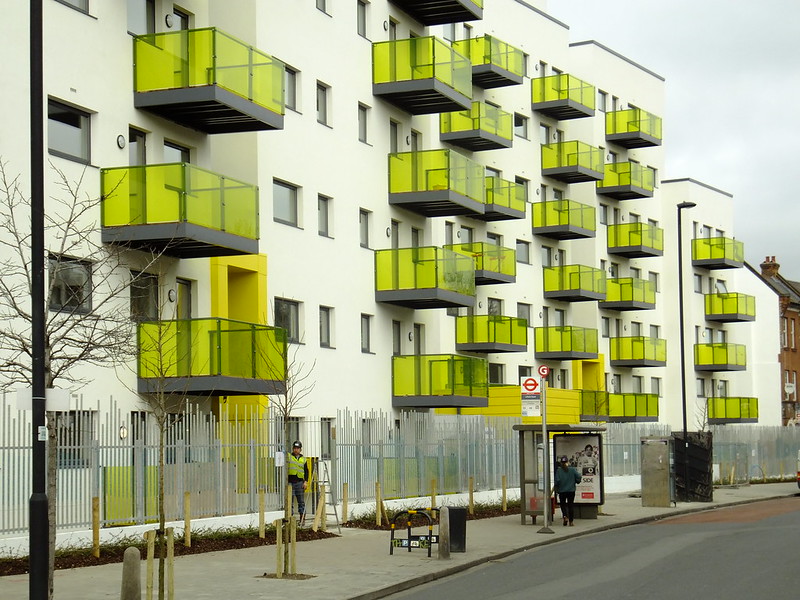In this article, first published in the June 2022 issue of Legal Action magazine, barrister Patricia Tueje argues that the government’s new Right to Buy plans will worsen the housing crisis, outlining the history of law and policy in the sector that has led us to today’s shortage of affordable homes.
On 1 May 2022, the prime minister was reported to be considering a right to buy housing association scheme as the latest response to the UK’s chronic housing problems. But if these measures are introduced, they will exacerbate the poor conditions and housing insecurity currently affecting many households.
According to data (Table 102) from the Department for Levelling Up, Housing and Communities (DLUHC), when Legal Action was first published in 1972, around 37 per cent of tenants were living in privately rented accommodation, while around 63 per cent were local authority tenants. The data does not record any statistics for housing association tenants for that year, presumably because the numbers were low, but first published figures for such tenants in 1977, showing they accounted for just over three per cent of tenants in that year, while 69 per cent were local authority tenants. I suspect most, if not all, were granted periodic tenancies from the outset.
By 2017, the proportion of local authority tenants had decreased to around 19 per cent and housing association tenants accounted for around 28 per cent of tenants. In that year, the proportion of tenants in the private rented sector had increased to almost 53 per cent. In other words, there were more private sector tenants than the combined number of local authority and housing association tenants.
The growth of the private rented sector reflects the impact of the 1980 right to buy legislation (in the Housing Act 1980). The overall effect is that as the proportion of private sector tenants increases, so do the number of households living without security of tenure. The consequent shortage of social housing means reduced security of tenure has also become a trend in this sector. Since the introduction of the Housing Act 1996, new housing association tenancies are assured rather than secure. Also, since that Act came into force, they and local authority tenants ordinarily have to complete a probationary period without security, before obtaining a ‘full’ tenancy. Social landlords are also increasingly granting fixed-term tenancies rather than periodic ones, and in certain circumstances, these tenancies may be subject to an increasing range of mandatory possession grounds.
There are currently 36 pieces of legislation relating to the private rented sector according to the National Audit Office’s (NAO’s) report, Regulation of private renting (HC 863, 10 December 2021). Yet, despite the plethora of legislation, the report states that 13 per cent of private rented homes have at least one category 1 hazard, and 23 per cent are of non-decent standard (para 9, page 7). These figures are considerably higher than those for social housing.
Therefore, with increased numbers and poor standards, the regulation of private housing is currently under review. Under the present regulatory system, local authorities are empowered with enforcing the complex statutory framework, but they receive insufficient support from central government to regulate effectively, so enforcement varies widely. For instance, in England, relatively few (65 out of 308) have adopted selective licensing (NAO report, para 13, page 9). Ineffective regulation puts the onus on tenants to take action. However, without enforcement by local authorities, tenants who complain to their landlords have limited protection from retaliatory evictions. In fact, the NAO report found that the DLUHC had limited data on the number of retaliatory evictions (para 11, page 8), despite Deregulation Act 2015 ss33 and 34 taking effect back in 2015.
The House of Commons Public Accounts Committee received evidence in connection with the regulation of private renting in January 2022. During his oral evidence to the committee on 31 January 2022 (HC 996), Jeremy Pocklington, permanent secretary at the DLUHC, acknowledged that the private rented sector is ‘the most expensive, the least secure and has the lowest-quality tenure’.
Written evidence submitted to the committee by ACORN, a tenants’ union, shows half of tenants surveyed did not complain about housing conditions due to fears about being evicted. Glass Door Homeless Charity, meanwhile, stated that its caseworkers saw many examples of individuals being evicted either because they complained about conditions or exercised other tenancy rights.
The end of no-fault possession claims, which was proposed in 2019, could help address this insecurity and would improve housing conditions by dealing with the problem of retaliatory evictions. The government’s commitment to ending no-fault evictions was confirmed in the 2022 Queen’s speech, with a white paper expected soon. But while details of those proposals are eagerly awaited, the prime minister is considering giving housing association tenants the right to buy.
Again, details are not yet available, so it’s unclear to what extent it will mirror the large-scale voluntary right to buy scheme involving 44 housing associations in the Midlands that was trialled from 2018 to 2020. However, if the prime minister perseveres with his latest right to buy plan, it will exacerbate the housing crisis. The plan could jeopardise the effectiveness of any private sector regulation, as this sector is likely to expand even further, requiring greater resources to regulate it effectively. It would also reduce the number of affordable rented homes, which could see the number of housing association properties return to their 1970s levels.
___
Patricia Tueje is a housing barrister at One Pump Court and co-chair of the Housing Law Practitioners’ Association.
Photo credit: J Mark Dodds, Flickr, 2012. Image shows a housing association building in London.







